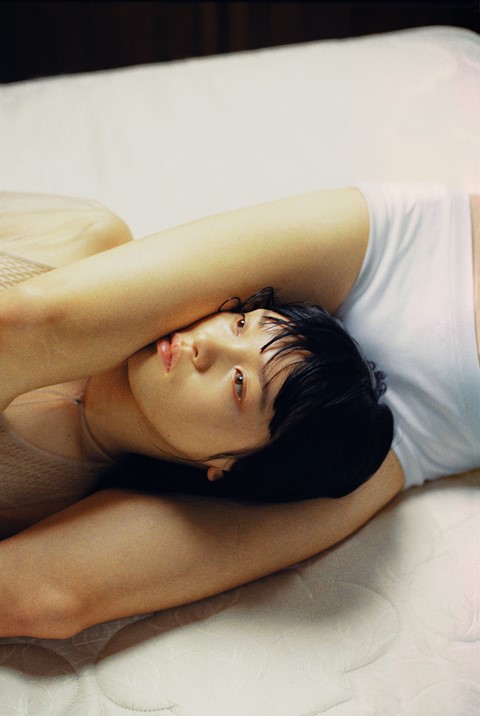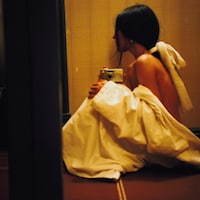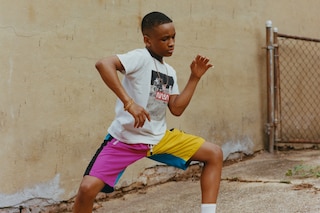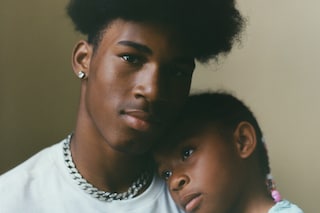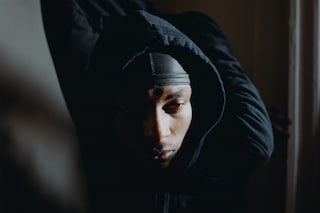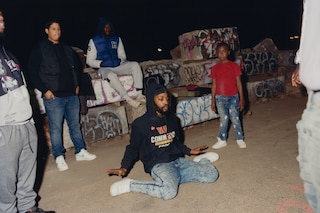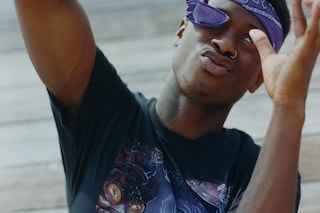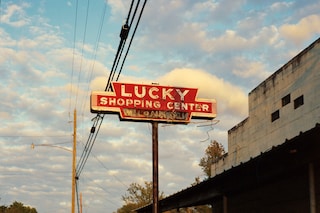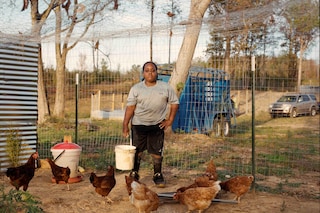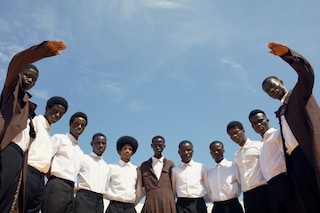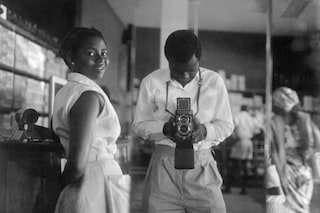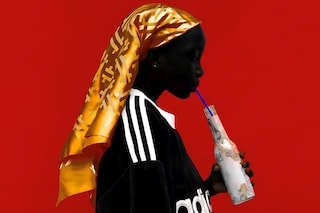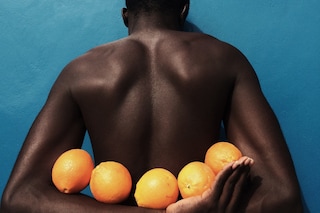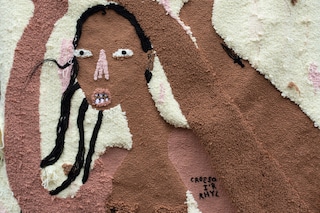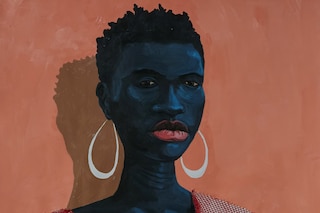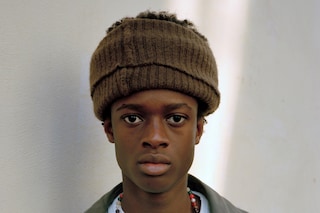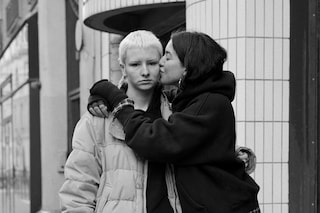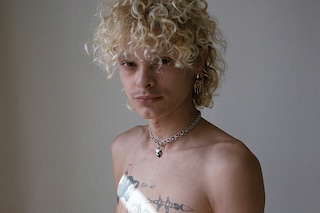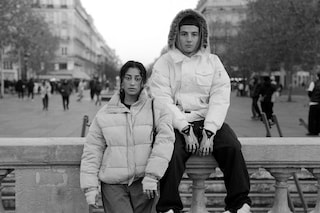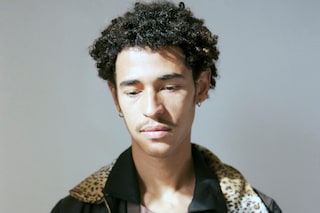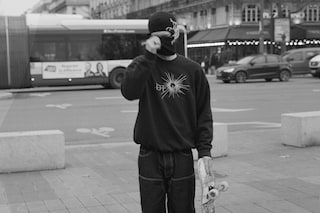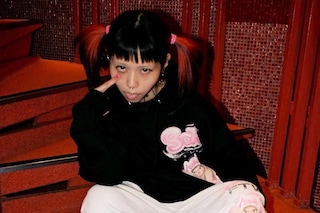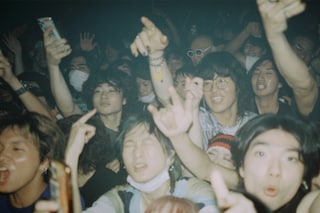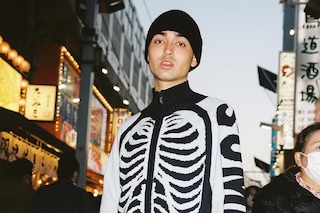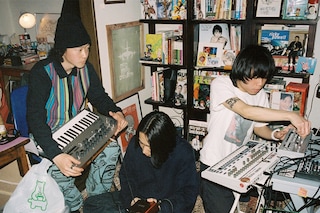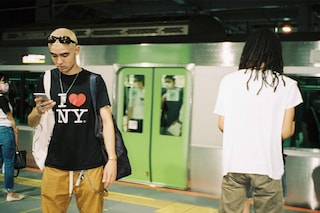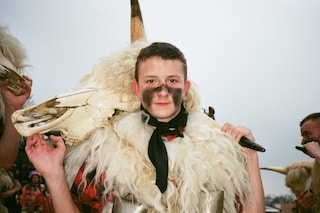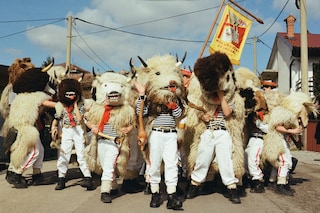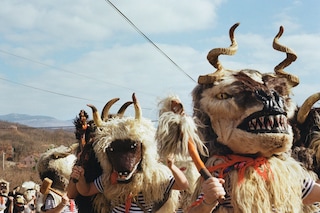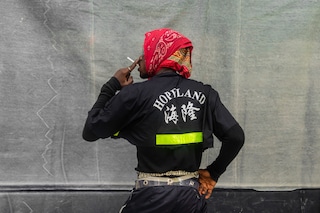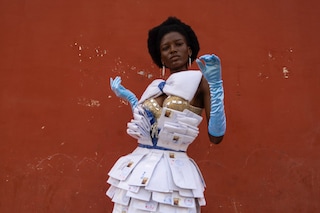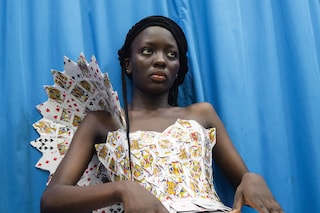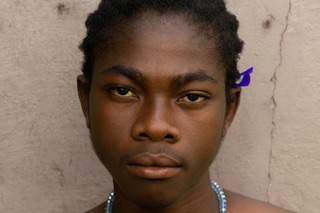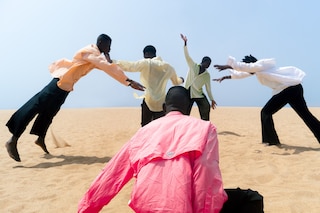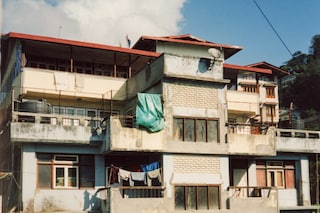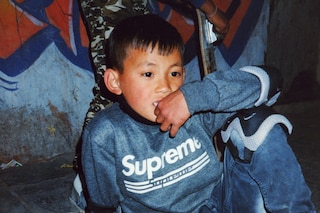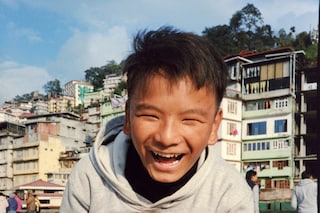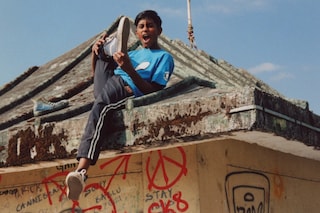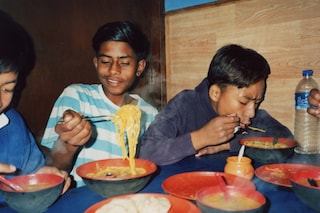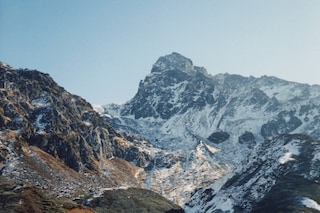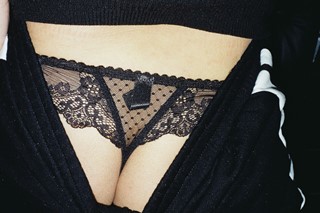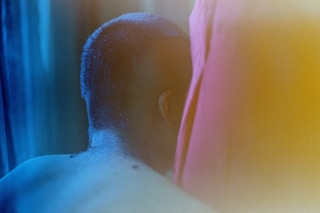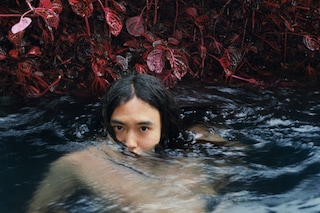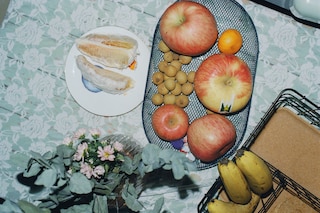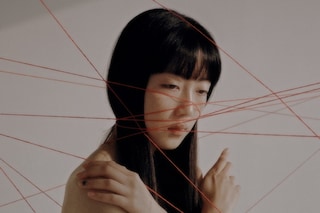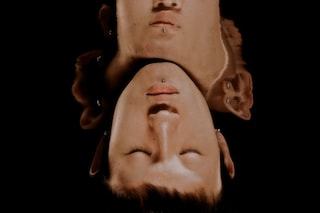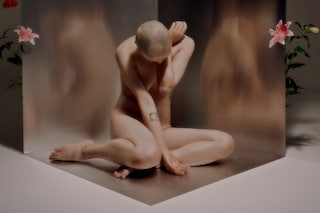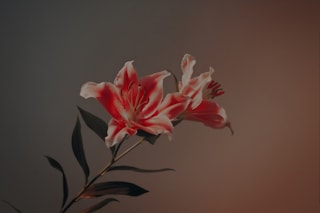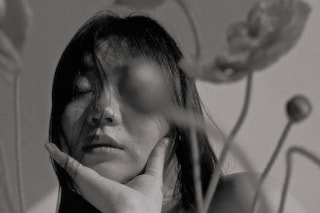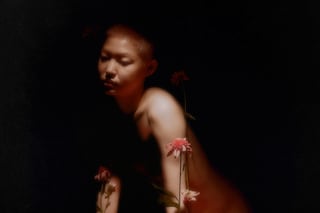From Washington’s ‘beat-ya-feet’ dance scene to Sikkim’s young skateboarding community, here are the most spectacular photo stories from this year
Photography continues to operate as a potent universal language, granting us the possibility of glimpsing unfamiliar worlds and cultures. As technology advances and the proliferation of images grows exponentially, photography reminds us of the importance of human connection and building on our empathy and understanding of one another.
In 2023, Dazed had the pleasure of showcasing the work of some truly inspiring image-makers. Revisit some of our favourites here.
SONG OF SONS, NATE LANGSTON PALMER
Born and raised in Washington DC, Nate Langston Palmer began photographing the group of ‘beat-ya-feet’ dancers after first encountering them in his childhood neighbourhood, Columbia Heights. Over the next four years, he spent time with them, photographing them practising in public spaces and homes, contorting their bodies and occupying great significance in the city. “Beat-ya-feet is kind of built into the fabric of DC at this point, and these dancers have become instrumental in keeping Black culture alive here,” Palmer explains.
The exhibition of Song of Sons contained interludes of stillness and tenderness, as well as crescendos of dynamism and intensity. Just like the pace of the dance itself, there’s an urgency to Song of Sons, highlighting and holding tight to DC’s roots – a city mostly recognised today as the nation’s political epicentre, with the White House at its heart. “DC used to be nicknamed ‘Chocolate City’ because for decades it was a majority Black city,” the photographer says. “But it’s currently experiencing some of the most advanced rates of gentrification in the country. And with the displacement of long-term Black residents comes the interruption of this vast cultural network – one that is deeply rooted in music and dance and play,” Palmer tells Dazed. Performed on street corners, in car parks, and at competitions, the portraits in Song of Sons document, celebrate and preserve the culture surrounding ‘beat-ya-feet’, their footwork-driven style of dance, which was created in and remains specific to the city.
DORA, YERKWOOD, WALKER COUNTY, ALABAMA, FUMI NAGASAKA
Lauded for her documentary-style portraits chronicling American youth culture, in 2017 the Japanese-born New York-based photographer visited the rural southern states for the first time on a trip to her friend’s hometown of Dora, Alabama. A genuine example of a small town, Fumi Nagasaka was introduced to all the modest landmarks of the area: college football, church and the popular fast food chain, Jacks. Over the following seven years, she returned many times, taking portraits of the town and forming the poignant and cinematic archive that became her 2023 photobook release.
The dreamy series showed the uninitiated a view of this region as seen by an outsider who found a profound affinity with the landscape and people she encountered. “Dora, Yerkwood, Walker County, Alabama is a photographic record of the incredible experiences I had during my time spent in Walker County,” Nagasaka says. “I witnessed kindness, pain, and humour, but most of all beauty. Beauty seemed to radiate from the landscapes and the people I met.”
VOICES: GHANA'S ARTISTS IN THEIR OWN WORDS, MANJU JOURNAL
Manju Journal’s debut book is a self-defining account of Ghanaian artists, reclaiming the impact that African art has had on shaping global and cultural trends. Since the journal was founded in 2015 by Richard Orlando Mensah, the Ghana-based pan-African digital platform and creative studio has sought to celebrate contemporary Africa at the intersection of fashion, photography, art and culture, representing ancestry and embedding the historical significance of the art that is too often forgotten.
Featuring work that spans a range of styles and techniques, from sculpture and textiles to photography and fine art, collaboration and the mightiness of community is at the heart of the book. “Ghanaian art is deeply rooted in its diverse cultural heritage, reflecting traditional beliefs, values and history,” Mensah told Dazed earlier this year. “From intricate Kente cloth weaving to symbolic Adinkra symbols, and expressive drumming and dance forms, Ghanaian art is a celebration of community, spirituality and the richness of the country’s past.”
PARIS YOUTH, DAN BOULTON
Dan Boulton is no stranger to documenting youth culture, having spent over a decade capturing the skaters of London’s Southbank. Whereas those images captured split-second snapshots of a moving scene, in his most formal work yet, he captures his subjects still and sitting in three-quarter portraits and close-ups, most staring directly into the camera.
In his debut monograph, Boulton captures the defiant spirit of youth culture in Paris. Published at a time of protest, the photos display determination and strength and, while it doesn’t document these demonstrations, Paris Youth does offer us something much harder to capture – the quiet resilience that remains once the placards are set down. As the book’s epigraph reads: “La beauté est dans la rue,” which translates to “beauty is in the street.”
IFUCKTOKYO, KIDO MAFON
Street-style photographer Kido Mafon began her career snapping outside and inside fashion shows, but soon moved to documenting Tokyo’s electric hive of subcultures. Out every night, Mafon captures the city’s frenetic youth culture which is experiencing a rebirth since the end of the pandemic, from the club kids with layered, multi-coloured hair, to new wave tech-bloke core j-rappers and die-hard Tokyo Vitamin fans.
“A year ago, I [thought] youth culture in Tokyo was pretty much dead... But recently, I feel like a lot of us started realising that we need to change things up. I feel like the power shift will come soon, [like a] revival of youth, where we, young creatives, come together and create a movement,” Mafon told Dazed. Using Instagram as her own exhibition and gallery space, she brings Tokyo’s underground into the mainstream consciousness. “I feel like there are many chances lying in the current society for IFUCKTOKYO to bring a new wave, so I’m very excited,” she says.
ZVONČARI, TOM MARSHAK
In a tradition handed down from generation to generation, photographer Tom Marshak explores Croatia’s largest carnival, a timeless initiation into adulthood for the country’s children. The photographs offer an insight into the local folklore of Rijeka: an enduring devotion to the land and desire to reconnect with the earth and others, the festival stretches back beyond medieval Europe. It was born as a fertility ceremony in the spring harvest and has become more generally a celebration of life ahead of Lent.
“Coming from London to Croatia’s endless mountains and the small towns nestled in between them – where everybody knows each other, united by nature, old customs and traditions – reminded me of the life we could have if only we wanted to,” says Marshak. His camera was drawn to the teenage participants, whom he photographed as a symbol of hope. “To me, that photograph evokes all the harmony and unconditional support nurtured by the younger generation in their fight for a better future,” he explains.
TOGO YEYE, DELALI AYIVI
Born in the US, raised in Germany and Malawi, and later a student in the UK, Delali Ayivi uses photography to celebrate Pan-Africanism through multifaceted stories of Black communities globally, specifically her Togolese heritage. By applying the lessons in colour and composition that her grandmother taught her in early childhood, Ayivi creates spectacular portraits that reflect the golden days of Alex A Acolatse’s West African photo studio. Not only was Acolatse Ayivi’s grandfather, he was also one of the first photographers in Togo and a true pioneer.
Beyond this artistic approach, Ayivi approaches image-making like a scientific study. “I draw a socio-political hypothesis that I will then aim to prove or disprove through research – though I don’t think I’ll ever be able to draw a conclusion. This is how I stay curious and open to my surroundings,” she says. “I used to think I had to make one big final statement about my work, and about African diaspora or racial identity. This is, of course, an impossible task.”
SIKKIM, TAEMIN HA
Seoul-based photographer Taemin Ha ended up in Sikkim by coincidence. After protests had broken out in Guwahati, India, his original shoot location, he decided to settle in the Eastern Himalayan state of Sikkim for a couple days. He first saw the skate group from his balcony and in a split-second decision his plans had shifted.
He began documenting their days on the terrace and gradually he was welcomed in as a friend. They invited the photographer into their houses daily and he spent time with their families uncovering a culture hidden within the mountains. Ha’s journey with the boys is traceable through the sequence of his images in Sikkim. Skate shots open the book, but soon lead to more intimate moments, like Purba helping his mum in her restaurant, discovering their inner world beyond skateboarding. “This isn’t simply a book about skateboarding, Ha notes. “It’s a book about the time the kids and I spent together.”
GOOD NEWS, KYLE WEEKS
For the photo book, Good News, Kyle Weeks’ intention was to be one of the many positive stories coming out of Africa. It represents the lineage of African photographers representing the continent through the lens of youth culture and style dating back decades, showing how style could express personal and cultural identity. Weeks’ also observes this style zeitgeist through Ghana’s youth, their clothes often sourced from Kantamanto, one of the world’s largest second-hand clothing markets.
“[Good News] started when I was photographing more fashion,” he explains. “Naturally, I found myself drawn to people who are expressive through clothes, but it was also the people I met and the circles I worked in. They were pushing fashion in Ghana; young stylists, models, musicians.” In many cases, these relationships went beyond the pictures. “It’s as much about making good images as building relationships. I always show them the pictures before publishing them because I want them to feel proud of how they’re represented. Collaboration is an important part of this book,” he says.
RIVE DROITE EXHIBITION, LIN ZHIPENG
Initially popularised through self-published zines and social media, the Beijing-based photographer’s lens remains interested in the unusual but nevertheless everyday moments in the lives of his friends and lovers. His images are poetic fragments of stories unfolding, capturing young people finding alternatives to China’s often culturally conservative society. Lin Zhipeng portraits of China’s youth counter-culture explore solitude and desire, echoing the dreamlike melancholy of Wong Kar-Wai’s colour-saturated movie, Chungking Express – a sensitive, stylish film about longing and loneliness set against the high-key colour of 1990s Hong Kong, which inspired Zhipeng’s pseudonym.
Earlier in the year, a new exhibition at Saint Laurent’s Rive Droite stores in Paris and Los Angeles, curated by resident creative director Anthony Vaccarello, brought together work from No.223’s archives. Spanning 2016 to 2019, the show was composed of intimate scenes shot in China, Tibet, Southeast Asia, Japan and Europe.
HAFIZ, SABIHA ÇIMEN
The self-taught photographer Sabiha Çimen picked up a camera for the first time at the age of 30. Over the next five years, she would develop, Hafiz: Guardians of the Qur’an, a project focusing on young girls learning to recite 604 pages of the religious book. Despite the intensity and isolation of Hafiz, Çimen’s work offers an affectionate homage to the tradition. Her lyrical photographs subtly investigate the transition of childhood into adolescence, as well as the solidarity among the girls.
Today, she feels nostalgic about her time among a tight-knit community of girls. While paying respect to their sheer discipline and diligence, her compassionate gaze celebrates their spirit of rebelliousness and resistance to the school system, expressed through pastel pinks, crushed watermelon, chipped nail polish, lilac hijabs and self-possessing gazes. “I wanted to show the poetic and playful moments of their lives – the broader picture beyond the act of studying,” she says. “I wanted to give Muslim women a chance to speak for themselves. In both Western and Islamic cultures, they are often underrepresented.”
FEARLESS FLOWERS, MARCIN T JOZEFIAK
Marcin T Jozefiak’s photographic series and debut photobook, Fearless Flowers, is his way of exploring the complexity of Seoul’s cultural landscape and the true diversity of its inhabitants. Taken over the course of two years, the intimate, powerful studio portraits feature Korean youth – many of whom are openly queer – proudly embodying their identities.
“It all comes from me trying to learn more about the culture and understand it,” he says. “I was just trying to understand where the diversity [was] or where the subcultures are – actually seeing how people feel about living here and just wanting to connect.”
Join Dazed Club and be part of our world! You get exclusive access to events, parties, festivals and our editors, as well as a free subscription to Dazed for a year. Join for £5/month today.
